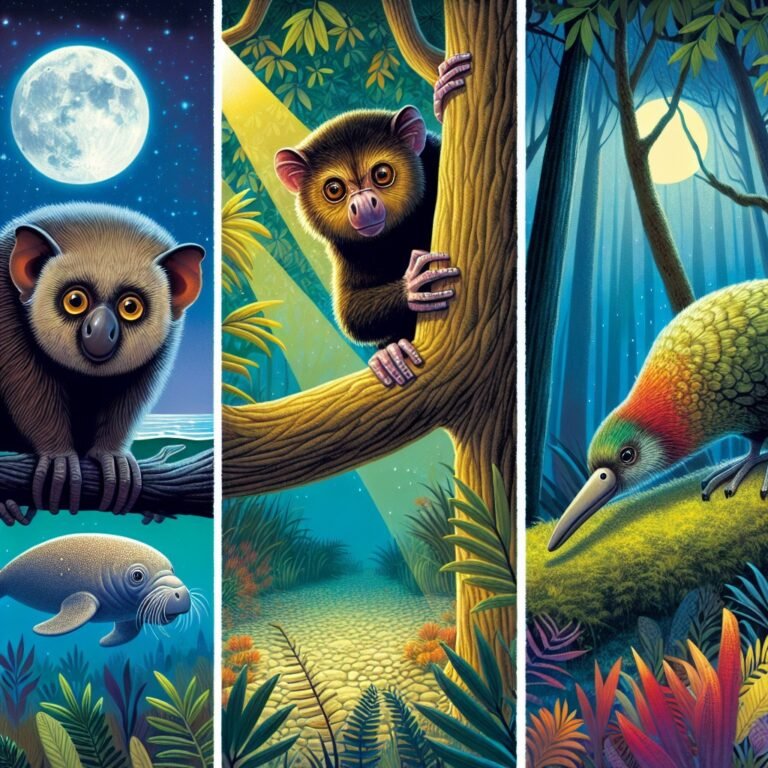Welcome to a world of wonder and discovery, where we delve into the fascinating realm of Fun Facts for Kids About Rare Animals. In this captivating post, we unravel the mysteries and unique characteristics of extraordinary creatures that roam our planet. From the elusive Okapi to the regenerating Axolotl, each rare animal holds tales of adaptation, survival, and conservation that are sure to spark the curiosity and awe of young minds. Join us on this educational journey as we explore the diverse and wondrous world of rare animals, shedding light on the importance of biodiversity, conservation, and the marvels of the natural world. So, get ready to be inspired and amazed by the incredible creatures that share our planet. Let’s embark on this adventure together and uncover the fascinating Fun Facts for Kids About Rare Animals!
Fun Facts for Kids About Rare Animals
1. The Okapi: A Giraffe Zebra

For younger kids: The okapi looks like it’s part giraffe and part zebra, but it’s actually related to giraffes!
For older kids: The okapi is a distant relative of the giraffe, with a similar long neck and ossicones (horn-like structures) on its head. Its zebra-like stripes help it camouflage in the dense forest of the Congo.
Detailed explanation:The Okapi, also known as the “Giraffe Zebra,” is a rare and fascinating animal that inhabits the dense rainforests of the Democratic Republic of Congo in Central Africa. Despite its zebra-like stripes on its hind legs and a face resembling a giraffe, the Okapi is actually more closely related to the giraffe.
One of the most interesting **Fun Facts for Kids About Rare Animals** is that the Okapi has a long, dark purple tongue that can reach up to 18 inches in length. This prehensile tongue is used to strip leaves from branches and clean its ears and eyes, making it a versatile tool for feeding and grooming. Another unique feature of the Okapi is its ability to produce infrasound vocalizations, which are sounds that are below the range of human hearing. These vocalizations are used for communication over long distances in the dense forests where visibility is limited.
The Okapi is a solitary and elusive creature, making it difficult for researchers to study their behavior in the wild. However, they are known to be herbivores, feeding on leaves, fruit, and other plant materials. Despite their large size and powerful build, Okapis are actually very shy animals and will usually flee from humans rather than confront them.
In conclusion, the Okapi is truly a remarkable and unique animal that captivates both researchers and children alike with its unusual appearance and behaviors. By learning more about these **Fun Facts for Kids About Rare Animals**, we can inspire curiosity and appreciation for the incredible diversity of species that inhabit our planet.
Fun Facts for Kids About Rare Animals
2. The Spiny Bush Viper: A Color Changing Snake
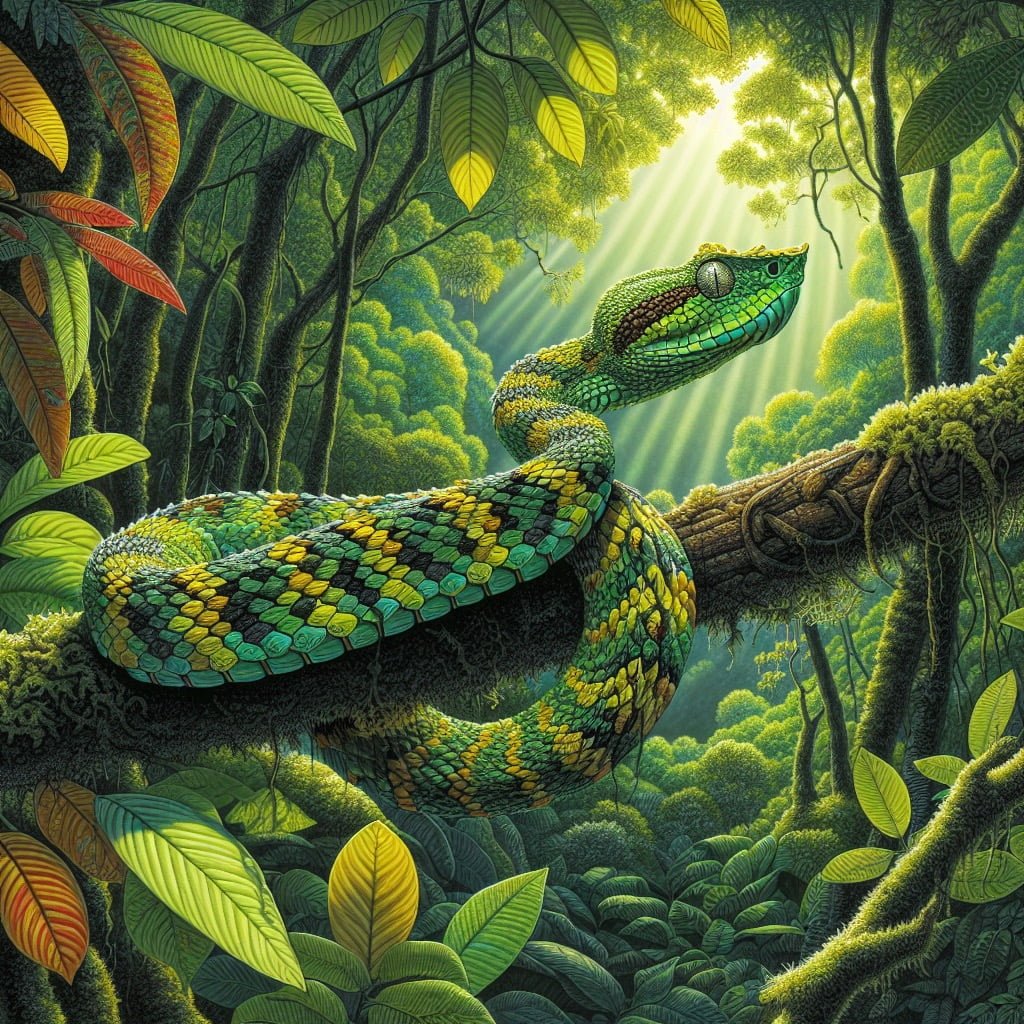
For younger kids: The spiny bush viper can change its color to blend in with its surroundings!
For older kids: The spiny bush viper has the unique ability to change its color, from bright green to rusty brown, to match the vegetation it lives in, making it a master of camouflage.
Detailed explanation:The Spiny Bush Viper, also known as Atheris squamigera, is a fascinating snake species native to the forests of Central and West Africa. What sets this snake apart from others is its unique ability to change color. This remarkable adaptation helps the Spiny Bush Viper blend in with its surroundings, making it an expert ambush predator.
One of the most interesting Fun Facts for Kids About Rare Animals is that the Spiny Bush Viper has the ability to change its color based on temperature, light, and humidity. The snake can range in color from bright green to dark brown, allowing it to camouflage itself effectively in the dense vegetation where it resides. This color-changing ability not only helps the snake avoid predators, but also aids in ambushing its prey, such as small mammals and birds.
Another fascinating aspect of the Spiny Bush Viper is its unique scale pattern. The snake’s dorsal scales are keeled, giving it a rough, spiky appearance that helps it blend in with the thorny bushes and undergrowth of its habitat. This, combined with its color-changing ability, makes the Spiny Bush Viper a master of disguise in the dense forests it calls home.
In conclusion, the Spiny Bush Viper is a truly remarkable snake species with its ability to change color and blend in seamlessly with its environment. This incredible adaptation not only helps the snake survive in its natural habitat, but also makes it a captivating subject for those interested in rare and unique animals.
Fun Facts for Kids About Rare Animals
3. The Kakapo: A Ground Dwelling Parrot

For younger kids: The kakapo is a rare parrot that can’t fly and lives on the ground.
For older kids: The kakapo, also known as the “owl parrot,” is the world’s heaviest and only ground-dwelling parrot, with a unique nocturnal lifestyle and a talent for climbing trees.
Detailed explanation:The Kakapo, also known as the “night parrot” or “owl parrot,” is a unique and fascinating bird that is native to New Zealand. This large, nocturnal parrot is known for its ground-dwelling habits, as it prefers to make its home in burrows or hollow trees rather than in the trees like most other parrot species. The Kakapo is also one of the heaviest parrots in the world, with adult males weighing up to 4 kilograms.
One of the most interesting Fun Facts for Kids About Rare Animals is that the Kakapo is not only ground-dwelling, but also flightless. Unlike most other birds, the Kakapo’s wings are very small and underdeveloped, making it unable to fly long distances. Instead, the Kakapo uses its strong legs and sharp claws to climb trees and navigate its forest habitat, as well as to defend itself from predators.
Another fascinating fact about the Kakapo is its unique mating ritual. During the breeding season, male Kakapos gather in a communal area known as a lek, where they perform elaborate displays to attract female mates. These displays can include booming calls, wing-flapping, and puffing up their bodies to appear larger and more impressive. The male Kakapos also create special tracks called “booming bowls” where they use their bodies to amplify their calls and attract females.
Unfortunately, the Kakapo is also one of the rarest and most endangered parrot species in the world, with only around 200 individuals left in the wild. Conservation efforts are underway to protect and preserve this unique bird, including captive breeding programs and predator control measures on its native islands. Hopefully, with continued conservation efforts, future generations will still be able to marvel at the fascinating Kakapo and its remarkable adaptations for survival in its natural habitat.
Fun Facts for Kids About Rare Animals
4. The Aye-Aye: A Creepy but Cute Primate
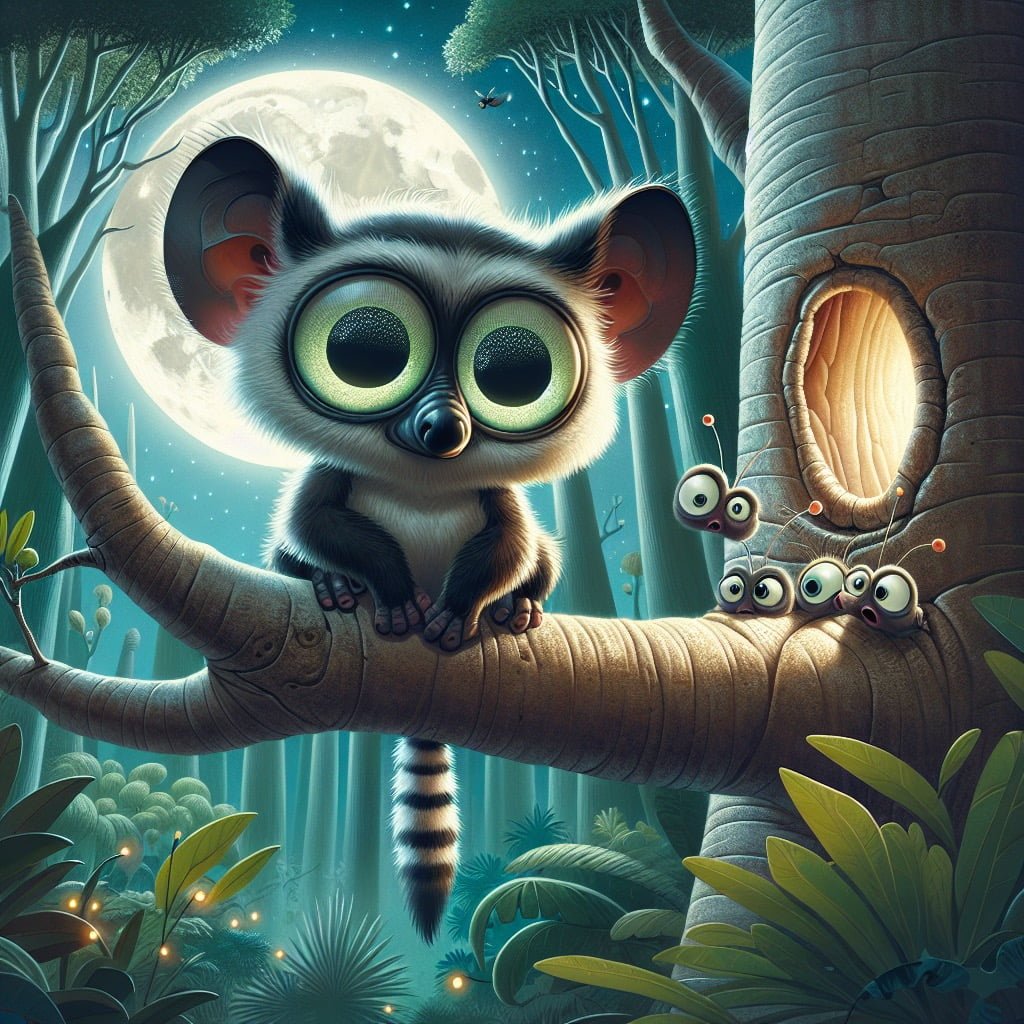
For younger kids: The aye-aye has a long middle finger that it uses to find and scoop out insects to eat. It looks really funny!
For older kids: The aye-aye is one of the most bizarre-looking primates with its long, bony middle finger, which it uses to tap on trees and search for grubs and insects to eat, making it a unique and fascinating creature.
Detailed explanation:The Aye-Aye is a unique primate that can be found in Madagascar. While its appearance may initially seem creepy to some, with its large eyes, bat-like ears, long fingers, and constantly growing incisors, many people also find it to be quite cute in its own strange way.
One of the most fascinating Fun Facts for Kids About Rare Animals is that the Aye-Aye uses a specialized hunting technique that is unlike any other primate. It taps on trees using its elongated middle finger to listen for insects inside. Once it detects movement behind the bark, it will use its sharp incisors to gnaw into the wood and scoop out the insect using its long, thin finger. This unique adaptation sets the Aye-Aye apart from all other primates and showcases the remarkable diversity of behaviors found in nature.
Another interesting aspect of the Aye-Aye is its solitary nature. Unlike many other primates that live in social groups, the Aye-Aye prefers to live alone and only comes together with others during mating season. This behavior is thought to be a result of its specialized diet and hunting technique, which may be more successful when performed alone.
In conclusion, the Aye-Aye is a truly fascinating and unique primate that showcases the incredible diversity of adaptations and behaviors found in the animal kingdom. While it may be considered creepy by some, there is no denying its cuteness and charm, making it a popular subject for Fun Facts for Kids About Rare Animals.
Fun Facts for Kids About Rare Animals
5. The Fossa: A Mongoose-Like Predator
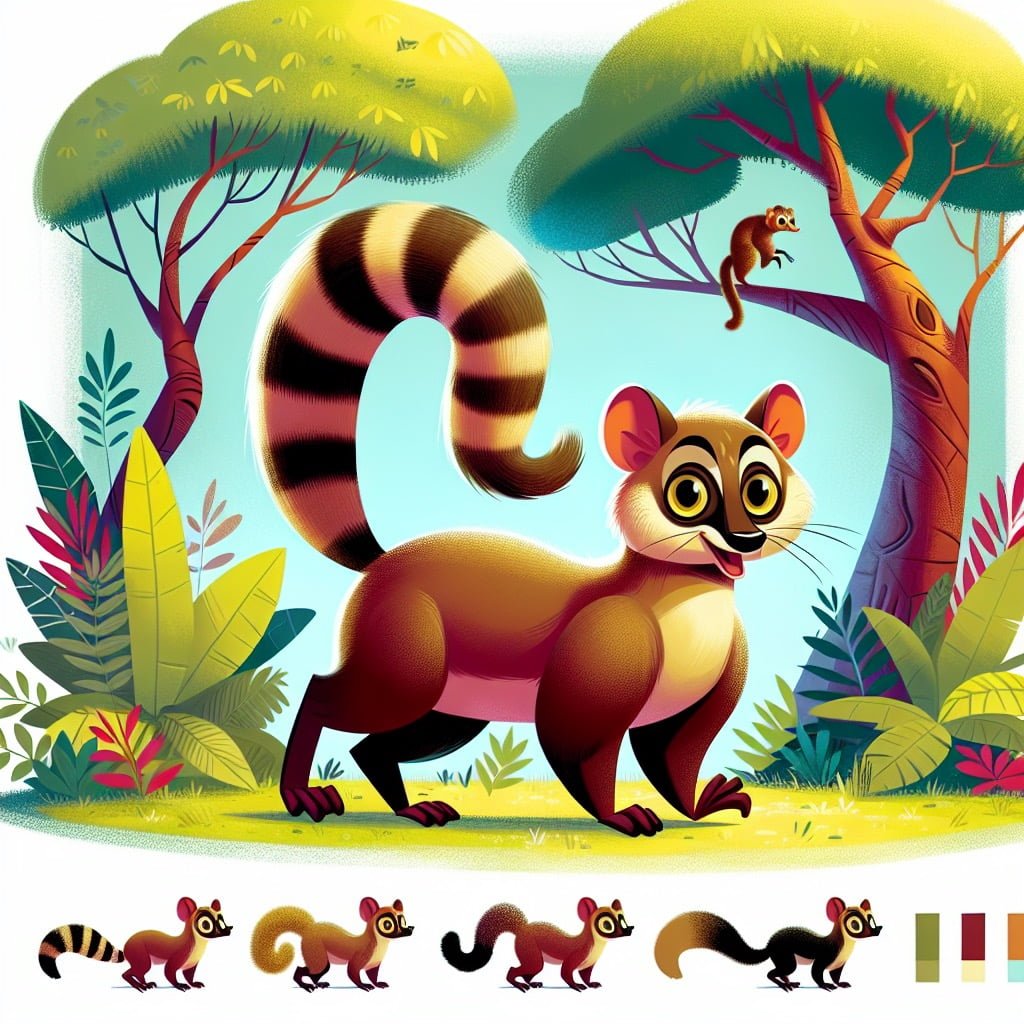
For younger kids: The fossa looks like a mix between a cat and a dog, but it’s actually related to the mongoose!
For older kids: The fossa is the largest carnivorous mammal on the island of Madagascar, with a slender body, retractable claws, and a flexible ankle joint like a feline, but it’s actually closely related to the mongoose family.
Detailed explanation:The fossa, a mongoose-like predator, is a fascinating and rare animal that inhabits the island of Madagascar. This unique carnivore is the largest predator on the island and plays a crucial role in the ecosystem as a top predator. Despite its resemblance to a mongoose, the fossa is actually more closely related to the mongoose family’s larger members like the civets and genets.
One of the most interesting Fun Facts for Kids About Rare Animals is that the fossa has a slender body, sharp claws, and powerful jaws, making it an efficient hunter. It primarily preys on lemurs, birds, rodents, and reptiles, using its agility and keen sense of smell to track down its prey. The fossa is also known for its ability to climb trees with ease, allowing it to access hard-to-reach prey or escape from potential threats.
Another fascinating fact about the fossa is its unique reproductive behavior. Females will only come into estrus for a brief period of time each year, during which male fossas will compete for the opportunity to mate. This competitive mating behavior is rare among carnivores and adds to the intrigue of this elusive species.
Sadly, the fossa is facing threats from habitat loss, hunting, and competition with introduced species. Conservation efforts are crucial to protect this rare and unique animal from disappearing from the wild.
In conclusion, the fossa is a captivating and mysterious creature that serves a vital role in Madagascar’s ecosystem. Its mongoose-like appearance and predatory behavior make it a truly unique predator worth learning about. Fun Facts for Kids About Rare Animals, like the fossa, can inspire curiosity and a love for the natural world.
Fun Facts for Kids About Rare Animals
6. The Fennec Fox: Ears as Big as Its Head

For younger kids: The fennec fox has huge ears that help it hear sounds far away, just like a superhero!
For older kids: The fennec fox has the largest ears in proportion to its body of any canid, which not only help it hear prey moving underground but also regulate its body temperature in the desert heat.
Detailed explanation:The Fennec Fox is truly a unique and fascinating creature, especially known for its distinctive feature of having ears as big as its head. These adorable animals are native to the sandy deserts of North Africa and the Arabian Peninsula, where their oversized ears serve a crucial purpose in their survival in such harsh environments.
The Fennec Fox’s large ears act as a built-in cooling system, helping the fox regulate its body temperature in the scorching desert heat. The thin skin of the ears contains a complex network of blood vessels that allow heat to dissipate, keeping the fox cool even in the hottest of temperatures. In addition to thermoregulation, the Fennec Fox uses its ears to detect prey underground. The fox’s acute hearing allows it to listen for the movements of small rodents and insects beneath the surface of the sand, enabling it to locate and capture prey with precision.
These Fun Facts for Kids About Rare Animals make the Fennec Fox a popular subject of curiosity and admiration. Their unique appearance and fascinating behavior make them a favorite among wildlife enthusiasts and conservationists alike. Despite being elusive creatures in the wild, Fennec Foxes have gained popularity in captivity due to their charming personalities and adaptability to human interaction.
In conclusion, the Fennec Fox’s ears as big as its head are not just a quirky physical trait but a vital adaptation that allows these remarkable creatures to thrive in their harsh desert habitat. Their oversized ears play a crucial role in both thermoregulation and hunting, making them a truly remarkable species worth learning about and appreciating.
Fun Facts for Kids About Rare Animals
7. The Solenodon: A Venomous Caribbean Mammal
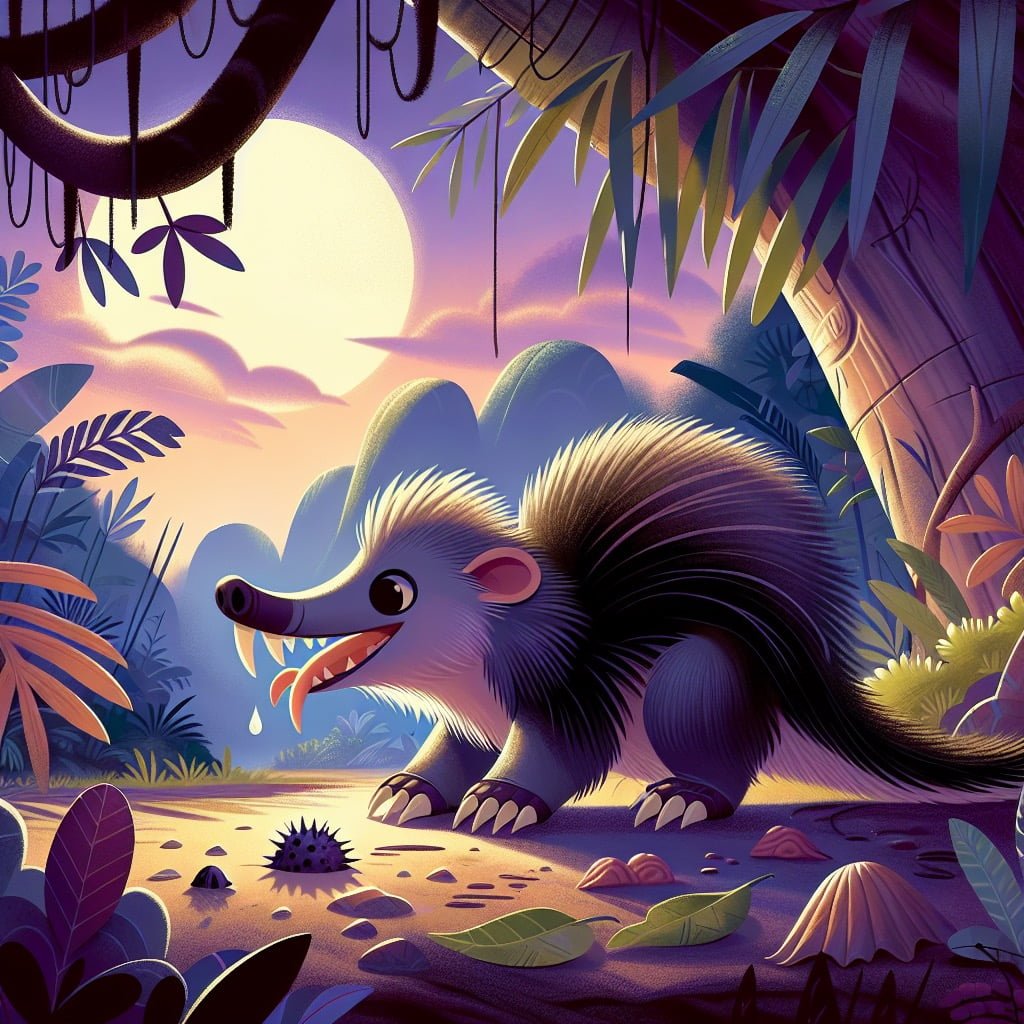
For younger kids: The solenodon looks like a mix between a shrew and a hedgehog and has a venomous bite like some snakes!
For older kids: The solenodon is one of the few remaining venomous mammals, with a venomous bite similar to that of a snake due to specialized salivary glands, making it a truly unique and intriguing creature.
Detailed explanation:The Solenodon, an intriguing and unique mammal native to the Caribbean, is a fascinating creature that often surprises people with its unusual characteristics. One of the most remarkable features of the solenodon is its ability to inject venom through specially adapted teeth. This makes it one of the very few venomous mammals in the world.
This rare animal, resembling a shrew but with a long snout and coarse fur, is predominantly nocturnal and feeds on insects, small animals, and fruits. The solenodon’s venom is not deadly to humans, but it can cause significant pain and swelling. Interestingly, the solenodon’s venom is produced in salivary glands and flows through specialized grooves in its teeth when it bites its prey.
Although the solenodon is a threatened species due to habitat loss and predation by introduced species, efforts are being made to protect and conserve these unique animals. Education about the solenodon, including fun facts for kids about rare animals, can help raise awareness about the importance of preserving biodiversity and protecting endangered species.
In addition to its venomous capabilities, the solenodon has other interesting adaptations, such as a keen sense of smell and hearing. These traits aid in its nocturnal hunting activities and contribute to its survival in its natural environment. By learning more about the solenodon and sharing fun facts about this rare animal, we can inspire future generations to appreciate and protect the incredible diversity of life on our planet.
Fun Facts for Kids About Rare Animals
8. The Pangolin: Armored and Endangered

For younger kids: The pangolin looks like a walking pinecone and curls up into a ball when it feels scared!
For older kids: The pangolin is covered in protective keratin scales, making it the only mammal with this adaptation, and sadly, it’s also one of the most trafficked animals, making it critically endangered.
Detailed explanation:The pangolin is a unique and fascinating creature that often goes unnoticed by many. As the only mammals covered in scales, they are often referred to as “scaly anteaters.” These scales, made of keratin (the same material found in human hair and nails), act as armor to protect the pangolin from predators in the wild.
Unfortunately, despite their tough exterior, pangolins are facing a serious threat to their survival – humans. Due to the belief in some cultures that their scales have medicinal properties, pangolins are heavily poached and sold on the black market. As a result, all eight species of pangolin are now listed as either vulnerable or critically endangered.
But there are some rays of hope for these unique creatures. Conservation efforts are being made to protect pangolins and raise awareness about the importance of their survival. In recent years, international organizations and governments have been cracking down on the illegal wildlife trade, and some countries have even implemented stricter laws to protect pangolins and other endangered species.
Despite their plight, pangolins continue to captivate people with their peculiar appearance and behavior. They are solitary creatures, mainly active at night, and dine on ants and termites using their long sticky tongues. These fun facts about pangolins are not only interesting for kids to learn about rare animals, but they also shed light on the importance of conservation and protecting endangered species for future generations to enjoy.
Fun Facts for Kids About Rare Animals
9. The Axolotl: A Regenerating Salamander

For younger kids: The axolotl can regrow its limbs and even parts of its brain—just like magic!
For older kids: The axolotl is a type of salamander that retains its larval features into adulthood, including the ability to regenerate lost body parts, making it a valuable asset for scientific research.
Detailed explanation:The axolotl, also known as the Mexican salamander, is a fascinating creature that has captured the attention of scientists and animal enthusiasts alike. One of the most remarkable qualities of the axolotl is its incredible ability to regenerate lost body parts. This phenomenon is quite rare in the animal kingdom, making the axolotl a truly unique and special creature.
When an axolotl loses a limb or sustains an injury, it has the amazing ability to regrow the lost body part with complete functionality. This process, known as regeneration, is made possible by the presence of specialized cells called blastema. These cells are capable of dividing and differentiating into the various cell types needed to rebuild the missing body part. The regeneration process can take several weeks to complete, but the end result is a fully functional limb that is almost indistinguishable from the original.
This ability to regenerate body parts has made the axolotl a popular subject of study in scientific research. Scientists are interested in understanding the cellular and molecular mechanisms behind this regenerative process, with the hope of applying this knowledge to potential medical treatments for humans.
In addition to its regenerative capabilities, the axolotl is also known for its unique appearance. With its feathery external gills and wide, toothy grin, the axolotl has a charming and somewhat otherworldly appearance that has endeared it to many people.
In conclusion, the axolotl is a truly remarkable creature with a range of fascinating qualities that make it a captivating subject of study. Its ability to regenerate lost body parts is just one of the many reasons why the axolotl is a favorite among animal lovers and scientists alike. Fun Facts for Kids About Rare Animals can be educational and entertaining for young learners who are curious about the wonders of the natural world.
Fun Facts for Kids About Rare Animals
10. The Tufted Deer: A Vampire Lookalike

For younger kids: The tufted deer looks like a vampire with its fang-like canines!
For older kids: The tufted deer is known for its distinctive fang-like canines and has a reputation for being a real-life vampire deer, attracting worldwide attention for its unique appearance.
Detailed explanation:One fascinating creature that often captures the attention of both children and adults alike is the Tufted Deer. This unique species of deer, native to certain regions of China, is known for its striking appearance which has earned it the nickname of “vampire deer.”
The most distinctive feature of the Tufted Deer is the small tuft of black hair that grows on its forehead, which somewhat resembles a pair of vampire fangs. This tuft is found on both male and female deer, but is more prominent in males. In addition to this unusual trait, Tufted Deer also have dark fur, white spots on their bodies, and relatively small bodies compared to other species of deer.
Despite its eerie appearance, the Tufted Deer is actually quite shy and prefers to inhabit dense forests where it can easily blend in with its surroundings. This unique deer species is primarily herbivorous, feeding on a diet of leaves, twigs, and other vegetation found in its natural habitat.
For children who are interested in learning about rare and unusual animals, the Tufted Deer is certainly a fascinating subject. Its vampire-like appearance and secretive nature make it a captivating creature to study and observe. By exploring fun facts about the Tufted Deer, kids can gain a greater appreciation for the diversity of the animal kingdom and the incredible adaptations that have evolved in different species over time.
Did You Know?
The Hispaniolan solenodon is one of the few venomous mammals and can use its saliva to kill its prey, making it a fascinating and unusual predator.
‘
Great! Here is the revised text:
Summary of Fun Facts for Kids About Rare Animals
Embark on a fascinating journey of discovery and learning by exploring fun facts for kids about rare animals. By delving into the world of these extraordinary creatures, you can not only satisfy your curiosity but also gain valuable insights into the beauty and complexity of the natural world.
Learning about rare animals allows us to marvel at the amazing adaptations and behaviors that have evolved over time. From the incredible color-changing abilities of chameleons to the regenerative powers of salamanders, these animals showcase the remarkable feats of nature. By understanding how these creatures have adapted to their environments, we can appreciate the ingenuity and resilience of life on Earth.
Moreover, studying rare animals highlights the interconnectedness of all living beings. Each species plays a crucial role in maintaining the delicate balance of ecosystems, providing us with a deeper understanding of the intricate web of life. By exploring the symbiotic relationships and food chains that sustain entire habitats, we can grasp the importance of preserving biodiversity for future generations.
Immerse yourself in the wonders of the natural world by indulging in fun facts for kids about rare animals. Spark your sense of wonder and curiosity, and uncover the unique characteristics and behaviors that make these creatures truly extraordinary. By taking this educational and eye-opening journey, you can enrich your understanding of nature and cultivate a deep appreciation for the diversity and uniqueness of life on Earth. So, why not delve into the world of rare animals and ignite your passion for exploring the wonders of the natural world?
Sources and additional information for Fun Facts for Kids About Rare Animals
San Diego Zoo KidsThe Smithsonian InstitutionDK Find Out!Australian MuseumWorld Wildlife FundThe Nature ConservancyAnimal PlanetMonterey Bay AquariumPBS NatureSmithsonian’s National Zoo & Conservation Biology InstituteWorld Wildlife FundAnimal Diversity Web (University of Michigan)IUCN Red List of Threatened SpeciesThe Cornell Lab of Ornithology – All About BirdsNational Audubon SocietyEncyclopedia of LifeSeaWorld Parks & EntertainmentAustralian Museum – AnimalsEncyclopedia of Life
